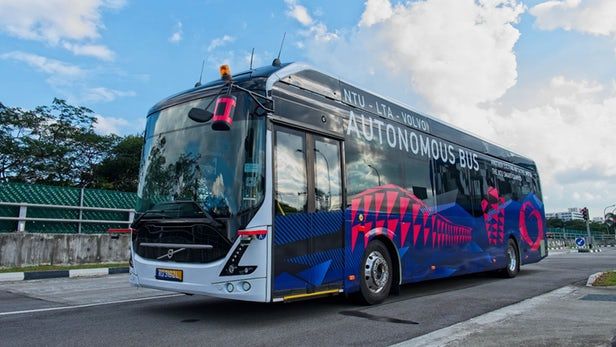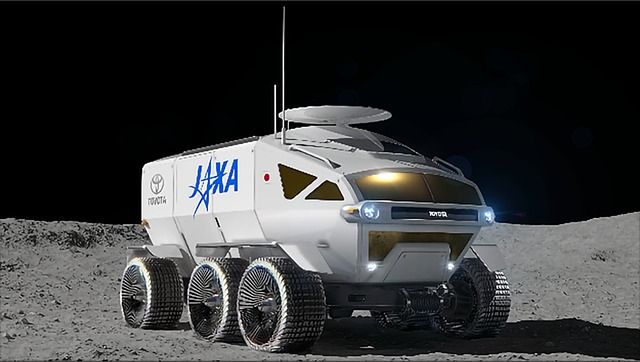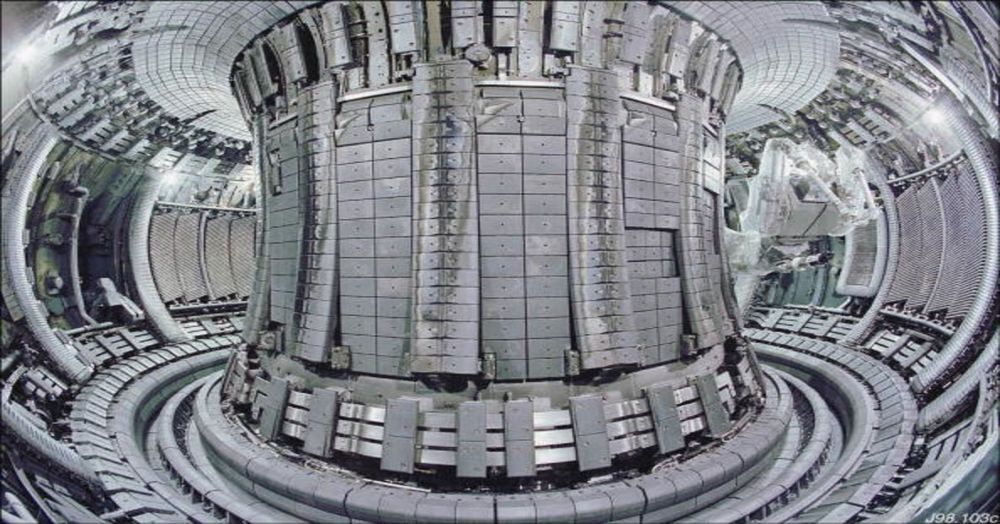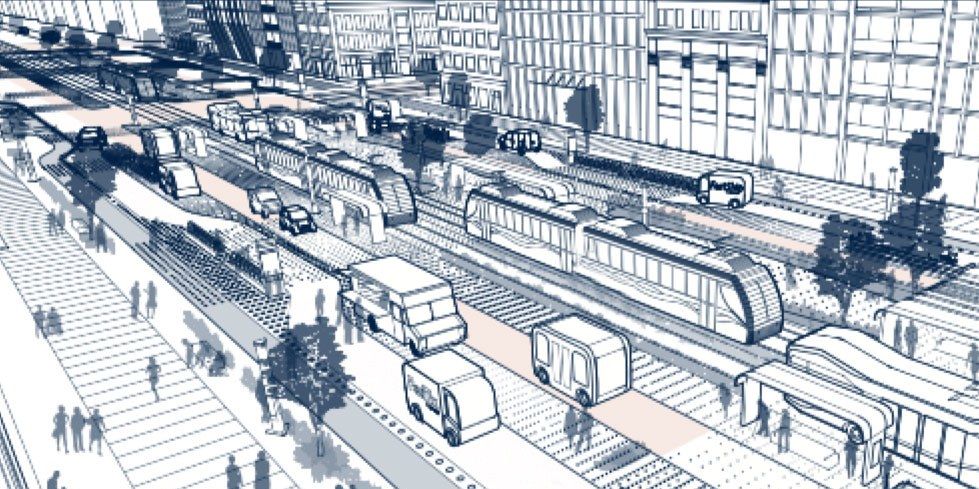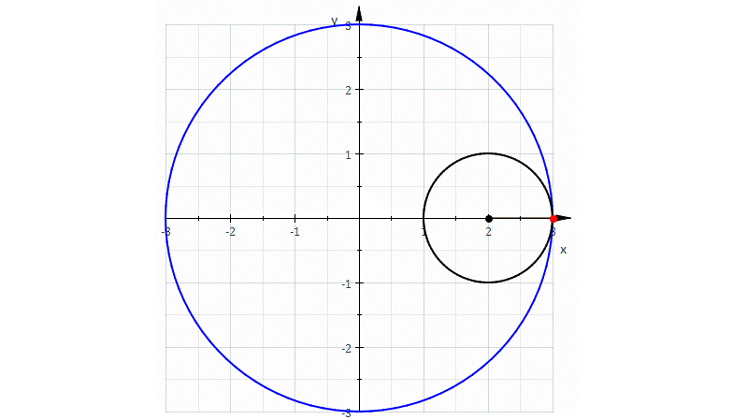Archive for the ‘transportation’ category: Page 440
Mar 12, 2019
JAXA: Tokyo
Posted by Klaus Baldauf in categories: robotics/AI, space, sustainability, transportation
Japan, March 12, 2019—The Japan Aerospace Exploration Agency (JAXA) and Toyota Motor Corporation (Toyota) agreed today to study the possibility of collaborating on international space exploration. As a first step, JAXA and Toyota agreed to further cooperate on and accelerate their ongoing joint study*1 of a manned, pressurized rover*2 that employs fuel cell vehicle technologies. Such a form of mobility is deemed necessary for human exploration activities on the lunar surface. Even with the limited amount of energy that can be transported to the moon, the pressurized rover would have a total lunar-surface cruising range of more than 10,000 km.
International space exploration, aiming to achieve sustainable prosperity for all of humankind by expanding the domain of human activity and giving rise to intellectual properties, has its sights set on the moon and Mars. To achieve the goals of such exploration, coordination between unmanned missions, such as the recent successful touchdown by the asteroid probe Hayabusa2 on the asteroid Ryugu, and manned missions, such as those involving humans using pressurized rovers to conduct activities on the moon, is essential. When it comes to challenging missions such as lunar or Martian exploration, while various countries are competing in advancing their technologies, they are also advancing their cooperative efforts.
JAXA President Hiroshi Yamakawa had this to say today about the agreement between JAXA and Toyota: “At JAXA, we are pursuing international coordination and technological studies toward Japan’s participation in international space exploration. We aim to contribute through leading Japanese technologies that can potentially generate spin-off benefits. Having Toyota join us in the challenge of international space exploration greatly strengthens our confidence. Manned rovers with pressurized cabins are an element that will play an important role in full-fledged exploration and use of the lunar surface. For this, we would like to concentrate our country’s technological abilities and conduct technological studies. Through our joint studies going forward, we would like to put to use Toyota’s excellent technological abilities related to mobility, and we look forward to the acceleration of our technological studies for the realization of a manned, pressurized rover.”
Mar 12, 2019
Why Bezos and Microsoft are betting on this $10 trillion energy fix for the planet
Posted by Derick Lee in categories: business, nuclear energy, transportation
So far, no one has commercialized nuclear fusion, but the race is on to be the first to figure it out. Whoever does will be able to bring power to the more than 1 billion who don’t have access to electricity, power cars and help companies operate businesses without having to create harmful emissions.
Jeff Bezos and others have sunk more than $127 million into General Fusion, a start-up trying to commercialize fusion energy. Microsoft is partnering with the company. The goal: to provide energy to 1 billion people that don’t have electricity.
Mar 10, 2019
THE AOA PROBLEM – WHAT WE CAN DO ABOUT IT (reprinted from Curt Lewis Flight Safety Information News)
Posted by James Christian Smith in category: transportation
In the wake of the October 29 Indonesian crash of a brand new Boeing 737 MAX 8 that took the lives of 189 passengers, the FAA has issued Emergency Airworthiness Directive (AD) 2018−23−51. The 737 is the most widely flown aircraft in the world, This tragedy opens an important conversation between regulators, operators and pilots.
Lion Air, an experienced 737 operator, was the launch carrier last year for the 737 MAX 8 and the MAX 9 in March. While it will take a long time to analyze the Lion Air 610 accident, the AD points out that current system architecture has created vulnerabilities.
Mar 9, 2019
The Smart Cities of the Future Are Already Taking Off
Posted by James Christian Smith in categories: energy, governance, transportation
Already, 1,000 smart city pilots are under construction or in their final urban planning stages across the globe, driving forward countless visions of the future.
As data becomes the gold of the 21st century, centralized databases and hyper-connected infrastructures will enable everything from sentient cities that respond to data inputs in real time to smart public services that revolutionize modern governance.
Connecting countless industries—real estate, energy, sensors and networks, and transportation, among others—tomorrow’s cities pose no end of creative possibilities and stand to completely transform the human experience.
Continue reading “The Smart Cities of the Future Are Already Taking Off” »
Mar 7, 2019
Aston Martin Lagonda: new SUV is electric-powered and… vegan
Posted by Genevieve Klien in category: transportation
Is this the guilt-free sports utility vehicle for the animal-loving, environmentally-conscious car enthusiast?
Aston Martin’s new Lagonda — unveiled at the Geneva Motor Show — is electric-powered and… vegan.
The Britain-based manufacturer says the luxury interior of the long, sleek vehicle is leather-free.
Continue reading “Aston Martin Lagonda: new SUV is electric-powered and… vegan” »
Mar 6, 2019
NASA Captures First-Ever Images of Intersecting Shockwaves From Two Supersonic Jets
Posted by Genevieve Klien in category: transportation
An air-to-air imaging technology developed by NASA has resulted in the first images ever taken of interacting shockwaves produced by in-flight supersonic jets. The new images, in addition to being beautiful, will help NASA design jets capable of producing gentle rumbles instead of loud sonic booms when breaking the sound barrier.
The project, called AirBOS, or Air-to-Air Background Oriented Schlieren flights, recently took place at NASA’s Armstrong Flight Research Center in Edwards, California, reports NASA in a press release. A new imaging system used during the test is now the first to capture high-quality images of interacting shockwaves produced by two different aircraft.
Mar 6, 2019
Waymo Built a Secret World for Self-Driving Cars
Posted by Genevieve Klien in categories: robotics/AI, transportation
An exclusive look at how Alphabet understands its most ambitious artificial intelligence project.
Mar 6, 2019
How to Design Streets for Humans—and Self-Driving Cars
Posted by Genevieve Klien in categories: robotics/AI, transportation
A new blueprint from city transportation planners and engineers, who say it’s never too early to start thinking about the future.
Mar 6, 2019
The Math That Takes Newton Into the Quantum World
Posted by Genevieve Klien in categories: information science, mathematics, quantum physics, transportation
In my 50s, too old to become a real expert, I have finally fallen in love with algebraic geometry. As the name suggests, this is the study of geometry using algebra. Around 1637, René Descartes laid the groundwork for this subject by taking a plane, mentally drawing a grid on it, as we now do with graph paper, and calling the coordinates x and y. We can write down an equation like x + y = 1, and there will be a curve consisting of points whose coordinates obey this equation. In this example, we get a circle!
It was a revolutionary idea at the time, because it let us systematically convert questions about geometry into questions about equations, which we can solve if we’re good enough at algebra. Some mathematicians spend their whole lives on this majestic subject. But I never really liked it much until recently—now that I’ve connected it to my interest in quantum physics.
If we can figure out how to reduce topology to algebra, it might help us formulate a theory of quantum gravity.
Continue reading “The Math That Takes Newton Into the Quantum World” »
